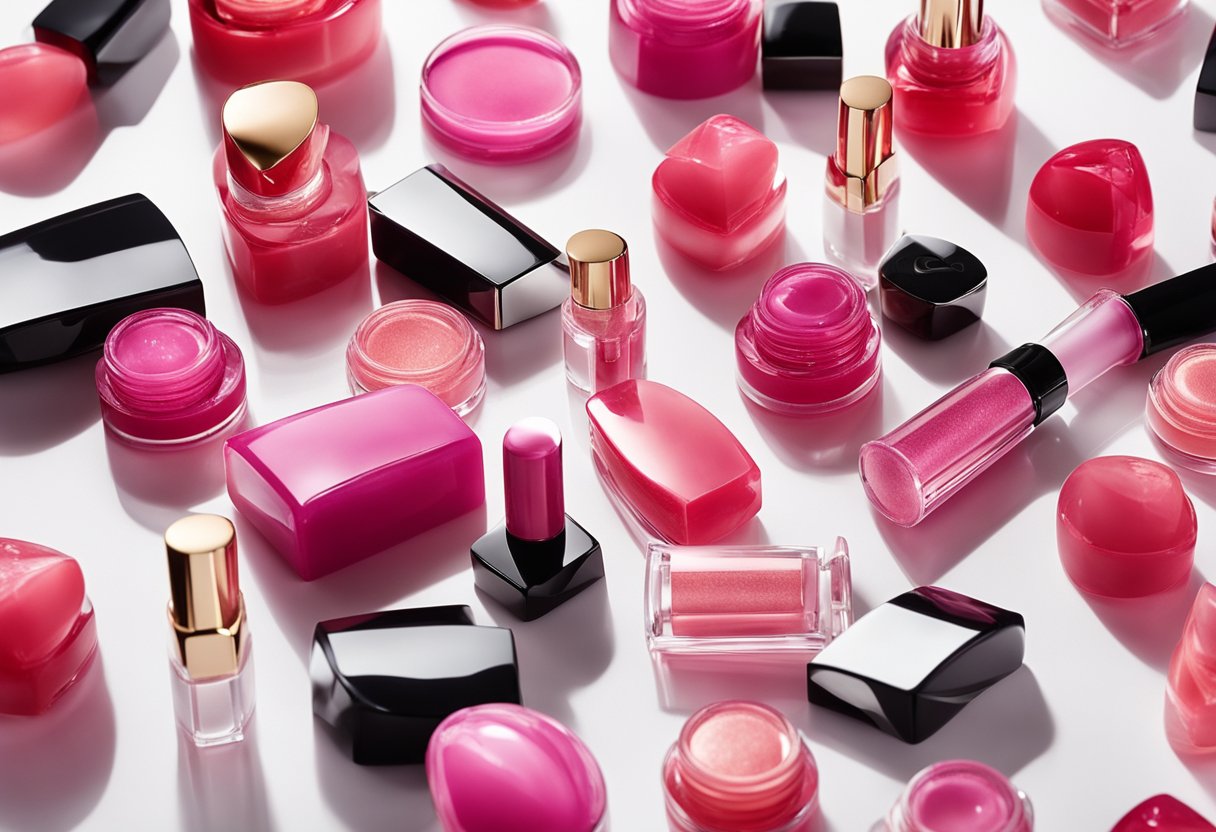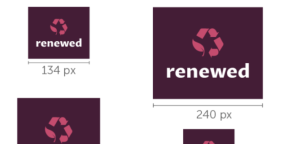Starting a lip gloss business can be an exciting and profitable venture. With the increasing demand for beauty products, especially lipsticks and lip glosses, launching your own lip gloss business can be a great way to tap into this growing market. Whether you are a makeup enthusiast or an entrepreneur looking to start a new business, there are several key steps to consider before launching your own lip gloss line.
First, it’s important to decide if starting a lip gloss business is right for you. While there are many benefits to launching your own business, it’s important to understand the challenges and potential risks involved. You will need to invest time and resources into developing your product line, marketing your brand, and building a customer base. However, with the right strategy and execution, a lip gloss business can be a rewarding and profitable venture.
Once you have decided to start your own lip gloss business, the next step is to develop a solid plan. This includes identifying your target market, defining your brand, and creating a product line that meets the needs and preferences of your customers. You will also need to consider the legal and financial aspects of starting a business, such as registering your business and obtaining any necessary permits or licenses. With a clear plan in place, you can move forward with confidence and take the necessary steps to launch your own successful lip gloss business.
Why Start a Lip Gloss Business?
Are you considering starting a business in the beauty industry? If so, a lip gloss business could be a great option for you. Here are a few reasons why:
Growing Industry
The lip gloss industry is a rapidly growing market, with increasing demand for new and innovative products. With the beauty industry projected to be worth over $800 billion by 2025, there has never been a better time to enter the market.
Low Startup Costs
Starting a lip gloss business is relatively inexpensive compared to other businesses. With an investment range of $850 to $7,800, you can start your business with minimal financial risk. This makes it a great option for entrepreneurs who are just starting out.
High Demand
Lip gloss is a staple in most people’s makeup routines. It is a versatile product that can be worn on its own or layered on top of other lip products. With such a high demand for lip gloss, there is plenty of room for new businesses to enter the market.
Imaginative Outlet
Creating your own lip gloss line allows you to express your creativity and bring your vision to life. You have the freedom to experiment with different colors, textures, and scents to create a unique product that sets you apart from the competition.
In conclusion, starting a lip gloss business can be a lucrative and rewarding venture. With a growing market, low startup costs, high demand, and a creative outlet, it is a great option for entrepreneurs looking to break into the beauty industry.
Understanding the Lip Gloss Market
If you’re planning to start a lip gloss business, it’s important to understand the market you’ll be entering. Here’s a breakdown of some key factors to consider:
Target Audience
Your target audience will largely be women, especially those who are interested in beauty and cosmetics. According to market research, the lip gloss industry is projected to grow from $3.67 billion in 2023 to $5.38 billion by 2032, exhibiting a compound annual growth rate (CAGR) of 4.90% during the forecast period (2023 – 2032). This growth is driven by increasing concerns about beauty, especially among women.
Market Trends
One trend in the lip gloss market is the increasing demand for natural and organic products. Consumers are becoming more aware of the potential harm that certain chemicals can cause, and are looking for products that are safer and more environmentally friendly. Another trend is the rise of social media influencers, who can have a significant impact on consumer behavior and purchasing decisions.
Competitor Analysis
To be successful in the lip gloss market, you’ll need to be aware of your competitors and what sets your product apart. Some of the key players in the market include L’Oreal, Estee Lauder, Revlon, and Maybelline. However, there are also many smaller, independent brands that are gaining traction with consumers. To stand out, you’ll need to offer a unique value proposition, whether that’s through your product formulation, packaging, branding, or marketing.
In summary, the lip gloss market is a growing and competitive industry, with a target audience of women who are interested in beauty and cosmetics. To succeed, you’ll need to stay on top of market trends and differentiate your product from the competition.
Crafting Your Unique Selling Proposition
Your unique selling proposition (USP) is what sets your lip gloss business apart from the competition. It’s what makes your product stand out in a crowded market and what makes customers choose your brand over others. Crafting a strong USP is essential to the success of your business.
To develop your USP, start by identifying your target audience. Who are you trying to reach with your lip gloss? What are their needs and desires? Once you have a clear understanding of your audience, you can start to develop a message that will resonate with them.
Here are some tips to help you craft a strong USP for your lip gloss business:
- Highlight the benefits: Focus on the benefits of your lip gloss, rather than just the features. For example, instead of saying “our lip gloss is long-lasting,” say “our lip gloss stays put all day, so you can look great without having to constantly reapply.”
- Emphasize what makes you unique: What sets your lip gloss apart from others on the market? Is it a unique formula, a special ingredient, or a particular shade range? Highlight what makes your product different and better than the competition.
- Use clear and concise language: Your USP should be easy to understand and remember. Use simple language and avoid jargon or technical terms that might confuse your audience.
- Be honest and authentic: Don’t make exaggerated or false claims about your product. Be honest about what your lip gloss can do and be authentic in your messaging.
- Make it memorable: Your USP should be memorable and easy to recall. Consider using a catchy slogan or tagline that sums up your message in a few words.
By crafting a strong USP for your lip gloss business, you can differentiate your brand from the competition and attract more customers. Take the time to develop a message that resonates with your target audience and highlights the unique benefits of your product.
Product Development
Developing a high-quality lip gloss product is crucial for the success of your business. Your customers expect a product that looks great, feels comfortable, and lasts long. Here are some key considerations for developing your lip gloss product.
Ingredients Selection
Choosing the right ingredients is essential for creating a high-quality lip gloss. Some common ingredients in lip gloss include:
- Oils: such as castor oil, coconut oil, and jojoba oil, which provide moisture and shine.
- Waxes: such as beeswax, carnauba wax, and candelilla wax, which help the product adhere to the lips.
- Pigments: for adding color to the lip gloss.
- Flavorings: for adding a pleasant taste to the product.
When selecting ingredients, make sure to choose high-quality, safe, and non-toxic ingredients. You should also consider the cost of the ingredients and how they will affect the final price of your product.
Packaging Design
The packaging of your lip gloss is just as important as the product itself. The packaging should be eye-catching, functional, and easy to use. Some key considerations for packaging design include:
- Type of container: such as tubes, pots, or wands.
- Material: such as plastic or glass.
- Size: consider the amount of product you want to include in each container.
- Labeling: make sure to include the product name, ingredients, and any other relevant information on the label.
Your packaging should also reflect your brand and target market. For example, if you are targeting a younger demographic, you may want to use bright colors and fun designs.
Product Testing
Before launching your lip gloss product, it is important to conduct thorough product testing. This will help ensure that your product meets your quality standards and is safe for your customers. Some key types of product testing include:
- Stability testing: to ensure that the product does not spoil or change over time.
- Microbial testing: to ensure that the product is free from harmful bacteria and fungi.
- Sensory testing: to evaluate the texture, scent, and taste of the product.
You may also want to conduct focus groups to get feedback from potential customers on the product’s performance and packaging.
By considering these key factors in product development, you can create a high-quality lip gloss product that meets the needs and expectations of your customers.
Business Model

When starting a lip gloss business, you need to determine your business model. There are two types of business models to consider: distributor and manufacturer.
As a distributor, you will buy the lip gloss from a manufacturer and sell it to customers. This option is ideal if you don’t have the resources or expertise to make lip gloss yourself. However, you will have less control over the product and may have to rely on the manufacturer’s quality and availability.
As a manufacturer, you will create your own lip gloss and sell it to customers. This option gives you more control over the product, but requires more resources and expertise. You will need to research and experiment with different formulas, packaging, and marketing strategies to stand out in the crowded market.
Whichever business model you choose, it’s important to consider the following factors:
- Target market: Who are your ideal customers, and what do they want from a lip gloss product?
- Product differentiation: How will your product stand out from competitors’ products?
- Pricing strategy: How much will you charge for your product, and how does it compare to competitors’ prices?
- Distribution channels: How will you get your product to customers, and what partnerships or agreements will you need to make?
- Marketing strategy: How will you promote your product and build brand awareness?
By considering these factors and choosing the right business model, you can set your lip gloss business up for success.
Marketing Strategies
To make your lip gloss business successful, you need to have solid marketing strategies in place. Here are some effective marketing strategies that you can use to promote your lip gloss business:
Social Media Promotion
Social media is a powerful tool to promote your lip gloss business. You can use social media platforms like Instagram, Facebook, and Twitter to showcase your products, engage with your audience, and build a loyal following. Here are some tips for social media promotion:
- Post high-quality images of your lip gloss products
- Use relevant hashtags to increase your reach
- Run contests and giveaways to increase engagement
- Collaborate with other brands and influencers to reach a wider audience
Influencer Partnerships
Influencer partnerships can help you reach a wider audience and build trust with potential customers. You can collaborate with influencers who have a large following on social media platforms like Instagram and YouTube. Here are some tips for influencer partnerships:
- Research and identify influencers who align with your brand values
- Reach out to them with a proposal for collaboration
- Provide them with free samples of your lip gloss products
- Ask them to create content featuring your products and share it with their followers
Offline Advertising
Offline advertising can help you reach potential customers who are not active on social media. You can use traditional advertising methods like billboards, flyers, and magazine ads to promote your lip gloss business. Here are some tips for offline advertising:
- Place ads in local newspapers and magazines
- Attend trade shows and events to showcase your products
- Partner with local stores and salons to sell your products
- Use eye-catching packaging to attract customers’ attention
By implementing these marketing strategies, you can effectively promote your lip gloss business and attract more customers. Remember to be creative, consistent, and authentic in your marketing efforts.
Financial Planning

Starting a lip gloss business requires careful financial planning to ensure that you have enough capital to get your business off the ground and to sustain it until it becomes profitable. In this section, we will discuss the initial investment required to start a lip gloss business, revenue projection, and break-even analysis.
Initial Investment
The initial investment required to start a lip gloss business can vary depending on the scale of your business. However, you can expect to spend between $25,000 to $500,000 in the first year. The following table provides an estimate of the costs involved in starting a lip gloss business:
| Expense | Cost |
|---|---|
| Product Development | $5,000 – $50,000 |
| Manufacturing Equipment | $10,000 – $100,000 |
| Packaging Equipment | $5,000 – $50,000 |
| Inventory | $5,000 – $50,000 |
| Marketing and Advertising | $5,000 – $50,000 |
| Rent and Utilities | $5,000 – $50,000 |
| Legal and Accounting Fees | $5,000 – $25,000 |
| Miscellaneous Expenses | $1,000 – $10,000 |
Revenue Projection
Revenue projection is an essential aspect of financial planning for any business. It helps you estimate how much money you can expect to make in the first few years of your business. To project your revenue, you need to have a clear understanding of your target market, your pricing strategy, and your sales channels.
Assuming that you sell your lip gloss for $10 per unit, you can use the following table to estimate your revenue projection for the first year:
| Month | Units Sold | Revenue |
|---|---|---|
| 1 | 500 | $5,000 |
| 2 | 750 | $7,500 |
| 3 | 1,000 | $10,000 |
| 4 | 1,250 | $12,500 |
| 5 | 1,500 | $15,000 |
| 6 | 1,750 | $17,500 |
| 7 | 2,000 | $20,000 |
| 8 | 2,250 | $22,500 |
| 9 | 2,500 | $25,000 |
| 10 | 2,750 | $27,500 |
| 11 | 3,000 | $30,000 |
| 12 | 3,250 | $32,500 |
Break-even Analysis
Break-even analysis is a useful tool for determining the minimum number of units you need to sell to cover your costs. It helps you understand the point at which your business becomes profitable. To conduct a break-even analysis, you need to calculate your fixed costs, variable costs, and contribution margin.
Assuming that your fixed costs are $50,000 per year, your variable costs are $5 per unit, and your selling price is $10 per unit, you can use the following formula to calculate your break-even point:
Break-even point = Fixed costs / (Selling price – Variable costs)
Using this formula, your break-even point would be:
Break-even point = $50,000 / ($10 – $5) = 10,000 units
In other words, you need to sell at least 10,000 units to cover your costs and break even. Once you have reached this point, any additional units you sell will generate profit for your business.
Legal Considerations
Starting a lip gloss business is an exciting venture, but it’s important to ensure that you comply with all legal requirements. Here are some legal considerations you should keep in mind:
Business Registration
Before you start selling your lip gloss, you need to register your business. This involves choosing a business name, deciding on a legal structure (such as a sole proprietorship, partnership, or LLC), and registering your business with the appropriate authorities. Registering your business will help you to protect your personal assets and ensure that you are operating legally.
Trademarking
Trademarking your business name and logo is an important step in protecting your brand. It ensures that no one else can use your name or logo without your permission. You can file for a trademark with the United States Patent and Trademark Office (USPTO) to protect your intellectual property.
Regulatory Compliance
The cosmetics industry is regulated by the Food and Drug Administration (FDA). You need to comply with all FDA regulations when creating and selling your lip gloss. This includes ensuring that your products are safe for use, accurately labeling your products, and following all manufacturing guidelines. Here are some FDA regulations you should be aware of:
- Good Manufacturing Practices (GMPs): These are guidelines for ensuring that your products are manufactured in a safe and consistent manner.
- Labeling Requirements: Your product labels must include a list of ingredients, directions for use, and any warnings or precautions.
- Cosmetic Ingredient Review (CIR): The CIR is an independent organization that reviews the safety of cosmetic ingredients. You should ensure that all of the ingredients in your lip gloss are approved by the CIR.
Complying with these regulations can be time-consuming and complex, but it’s essential for the success of your business. By following these legal considerations, you can ensure that your lip gloss business is operating legally and protect your brand from infringement.
Future Growth Opportunities
As the global lip gloss market continues to expand, there are several growth opportunities that you can take advantage of to stay ahead of the competition. Here are some potential areas for growth:
Expansion of Product Line
One way to increase your revenue is by expanding your lip gloss product line. You can introduce new shades, flavors, and formulations that cater to different consumer preferences. For instance, you can develop lip glosses that have added benefits such as SPF protection, anti-aging properties, or long-lasting wear. By diversifying your product offerings, you can appeal to a broader market and increase brand loyalty.
E-commerce
E-commerce is a rapidly growing channel for beauty products, and lip gloss is no exception. By establishing an online store, you can reach a wider audience and offer convenience to your customers. You can also use social media platforms to promote your products, engage with your followers, and drive traffic to your e-commerce site. Additionally, you can leverage data analytics to gain insights into consumer behavior and optimize your marketing strategies.
Sustainable Packaging
Consumers are becoming increasingly conscious of their environmental impact, and sustainable packaging is a growing trend in the beauty industry. By using eco-friendly materials and reducing waste, you can appeal to consumers who prioritize sustainability. For instance, you can use recyclable or biodegradable materials for your lip gloss packaging, or offer refillable options to reduce the amount of plastic waste. By adopting sustainable practices, you can differentiate your brand and attract environmentally-conscious consumers.
Emerging Markets
The lip gloss market is not limited to developed countries, and emerging markets present significant growth opportunities. Countries such as China, India, and Brazil have large populations with increasing disposable incomes and a growing interest in beauty products. By expanding your distribution channels to these markets, you can tap into a new customer base and increase your revenue. However, it is important to research and understand the cultural and regulatory differences in each market to ensure successful expansion.
In summary, the lip gloss market is ripe with growth opportunities for those who are willing to innovate and adapt to changing consumer preferences. By expanding your product line, embracing e-commerce, adopting sustainable practices, and exploring emerging markets, you can position your brand for long-term success.
Angela Irwin is a branding and design enthusiast with a Bachelor of Fine Arts in Graphic Design from Meadowbrook College. As a writer at Logocreator.io, she shares her expertise on logo design, graphic trends, and effective branding strategies, helping businesses create impactful visual identities.



